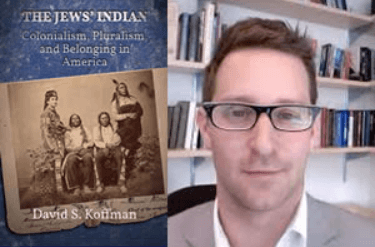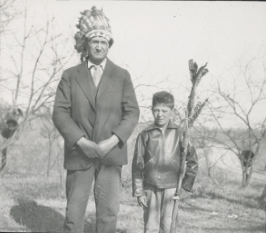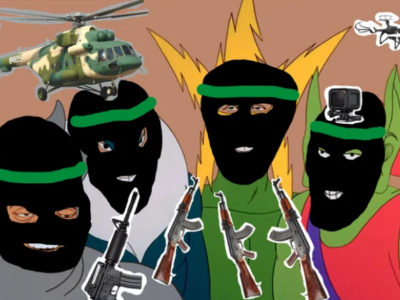Another guest post from Cooper, who is rapidly becoming one of our most prolific writers. You can follow Cooper on his new Telegram channel found here.
Many of you are likely familiar with Kevin Macdonald’s seminal work “The Culture of Critique”. One chapter of interest in this book centers on Jewish anthropologist Franz Boas. Macdonald makes the assertion that Boas’ Jewish identity spurred him into research that was “ethnopolitical” in nature. I have absolutely ZERO problem citing Kmac as he in turn always includes sources in his writing. That being said, I prefer to directly quote our enemies when possible. In this case that person is (((David S. Koffman))), and his book “The Jews’ Indian”. Koffman writes much the same thesis as Macdonald. I think folks would be less likely to take me to task when quoting a Jew writing about his own people. This is what Moike recommends; good enough for me.

The introduction to Chapter 6 of The Jews’ Indian reads:
“In the middle decades of the twentieth-century, American Jews assiduously deployed a range of advocacy efforts aimed at promoting equal legal and social footing for themselves. Concurrent and parallel to the work of lawyers, civil servants and philanthropists on behalf of Native Americans (the subjects of chapter 5) was the work of Jewish social scientists (the subjects of this Chapter)…As part of the first cadre of scholars professionally trained under the German Jewish immigrant pioneer of cultural relativism, Franz Boas, and his linguistic-anthropology counterpart Edward Sapir, a sizeable number of Jewish men and women lived in Native American tribes” (p. 174).

Let’s roll through some more quotes sans-commentary:
“Boas and his students shifted anthropology’s basic framework from one that assumed successive developmental stages of human societies to one rooted in cultural pluralism and relativism, by and large using American Indians as their objects of study. The profundity of this intellectual transformation can hardly be overestimated” (p. 175).
“The development of scholarly knowledge about native american life indirectly served contemporary Jewish political needs while speaking directly to the perceived political needs of Indians” (p. 175)
“…at least some of the motivations of anthropology as a field dovetailed with concerns about belonging and pluralism that midcentury Jews faced and surely animated some of the fields’ pioneering and influential practitioners” (p. 176).
“The ‘Jewishness’ of these social scientists and the ‘Indianness’ they represented and discussed to non-Indian audiences intersected” (p. 177).
“If the category of race disappeared from Americans’ conceptual lexicons, so too would racism and, by extension, anti-Semitism” (p. 178).
“Boas, like the Jewish institutions with whom he worked, attacked anti-Black and anti-Indian sentiment using the strategy of ‘fight[ing] anti-Semetism by remote control’” (p. 180).
“Despite their differences in scholarship, approach, and theory, the Jewishness of the Jewish anthropologists like Boas, Jacobs, Radin, and Sapir mattered” (p. 186).
Okay, we’ve now used a Jewish source to verify what Macdonald has said all along. How is this relevant to Canada, being Boas’s thing came out of the USA? Several of the guy’s students operated in Canada. Two figures of note are Edward Sapir (already mentioned above) and Frank Speck.
Now you can hit Sapir’s wiki page real fast and read that “Sapir was born into a family of Lithuanian Jews in Lauenburg”. Speck’s lineage, however, is harder to deduce. We can find out that he was raised in Brooklyn and that his middle name is Gouldsmith. These traits strongly suggest a Jewish background. Koffman writes “he told colleague and eventual biographer Horace Beck that ‘he was part Indian and that as a child he had had an Indian woman as a nurse’” (The Jews’ Indian, p. 191). HOWEVER (yep, a whirlwind I’m putting you through here) Koffman also describes Speck as “a social scientist disassociated from his Jewish identity” (p. 190) and includes him in lists of Boas’ Jewish students (p. 183, 204).
I first became aware of Frank Speck while reading Widdowson’s “Separate But Unequal” more on her here. This is a sample of what she wrote in that book:
“The idea of ancient indigenous hunting territories was first proposed by the anthropologist Frank Speck, a student of Franz Boas. According to Speck, indigenous hunting territories gave a kinship group the right to the fish and wildlife in a district that was inherited” (p. 180).
“…the notion that there were prohibitions against ‘trespass’ was important for establishing the existence of indigenous title to a defined area of land – the basis of current legal arguments for land claims. Speck, in fact, was specifically contracted by the federal government to delineate indigenous claims to land, and the connection between his research and land claims continued into the 1970s. Tanner, Fiet, and Cox also have used Speck’s conception of the deep historical roots of indigenous hunting territories to support the transfer of jurisdiction in northern Quebec to indigenous organizations. Again, there is a likely connection between research and the development of neo-tribal rentierism. The primordialist assumptions first developed by Speck dominate the royal commission’s understanding of the fur trade” (p. 180).

Frances Widdowson
The “royal commission” she is referring to is the Royal Commission on Aboriginal Peoples (1991-1996). This exercise paved the way for the Indian Residential Schools Settlement Agreement, which in turn led to the Truth and Reconciliation Commission, and on and on and on…It’s fitting that the Metis at least use the lemniscate on their flag. This native bullshit will not stop on its own; the sacred energizer beaver has a big battery up its ass. Jews have been quite active in securing IRSSA payouts and their typically unscrupulous behaviour has garnered indignation among native gibs recipients. I will cover this in an upcoming article.
Anyway, you can see that Speck’s expedition to Canada was significant with regards to land claims legalism. To find out more about his work and his relationship with Sapir I delved into this doctoral thesis: “Anthropological advocacy?: Frank Speck and the mapping of Aboriginal territoriality in eastern Canada, 1900-1950, Siomonn Pulla, Hon. B.A, M.A”. Pulla asserts that through Speck’s work we can find a “direct connection between anthropology and advocacy during the early part of the 20th century” (p. 1).
Speck’s fucking around was bankrolled by Sapir. This came after the latter was put at the head of the Canadian Anthropology Division at the Victoria Memorial Museum (part of the Canadian Geological Survey) (p. 20). At the time, Speck was the only anthropologist conducting research in eastern Canada (p. 21). Through Speck’s study of native tribes he came up with the idea that aboriginal families maintained property in the form of territory passed down through generations. From the early to mid-20th century Speck wrote many articles propping up this notion (p. 23, 24). Speck’s argument lay in his mapping of native families’ hunting territories. He used this data to “counter Canadian claims of sovereignty by reclaiming those visual representations used to alienate aboriginal peoples from their traditional territories” (p. 133). This approach was tied to ethnogeography built on Boas’ work (p. 141). Speck aimed to overturn the notion that natives were nomads (p. 229, 230). While he reoriented the accepted descriptions of native social structures, others such as (((Robert Lowie))) and (((Alexander Goldenweiser))) did the same. By citing each other and acting more or less in unison, these researchers deflated Goyish anthropology. Sapir was a great help in Speck’s mapping as he provided government maps free of charge. Speck then drew in hunting territories using the official maps for reference (p. 146, 147).
Ole’ Franky was known to speak of his research as if it was a matter of government interest or as though he was employed by the Canadian state as a commissioner. Pulla states this was likely not the case (p. 149). He was never even officially hired by Sapir. However, at one point Sapir did give him a note on official letterhead stating Speck worked for the Anthropology Division. In the 1920’s the Canadian Department of Justice did consult Speck regarding aboriginal land in Labrador (p. 152). This might be what Widdowson was referring to earlier. Pulla writes that while working with the Temagami land claim Speck may have claimed to be a government agent. The reader is then assured that “it is unlikely that he intended to misrepresent himself for the sake of acquiring data” (p. 236). This makes sense. If there’s one thing a Jew does not do, it is tell silly little fibs for personal gain >:)

Frank Speck
Frank Speck was a pioneer when it came to anthropological work in eastern Canada. While researching he was committed to championing native land rights (p. 13). The 20th century saw many disputes over resources between natives and governing bodies. Speck oriented his research against the White Man and towards affirming native sovereignty. Pulla states of Speck’s aims as shifting in 1912 (p. 25), but this doesn’t make sense given what else is written in this thesis. Take this passage: “Speck’s work as an advocate necessitated the development of representations of aboriginal territoriality that could be applied to counter the claims and land-use practices of mainstream non-aboriginal society that negatively affected aboriginal peoples” (p. 219, 220). This “cart before the horse” notion would back up the real reason Speck was interested in his mode of research (to support cultural relativist theories). Elsewhere Pulla characterizes Speck’s advocacy as a “life-long enterprise to counter racism by educating the public to accept aboriginal cultures and arouse public awareness regarding aboriginal land and resource rights” (p. 155). This falls in line with Koffman’s thoughts and it would make sense that Speck didn’t give half a fuck about the actual data. Let me explain.
Though a proponent of his work, Pulla admits that Speck’s assertions were “premature”. Speck wrote himself that his data on Mi’kmaq territory was “limited and inconclusive” (p. 252, 253). When Speck delivered a lecture “The Basis of American Indian Ownership of the Land” he neglected to mention mapping challenges he experienced. Speck also left out the changing nature of territorial boundaries, opting instead to describe hunting lands as fixed and clearly quantified (p. 251, 252). Nonetheless, Sapir’s Geological Survey and the American Anthropologist had no problem publishing excerpts from the lecture (p. 253, 254). If there was any doubt as to the sociopolitical part of Speck’s work, he laid it out in 1913 articles published in “the Red Man” (p. 238, 239). In fact, the choice of publication (rags that promoted “social policy initiatives” rather than proper anthropology journals) proves the point (p. 240, 241).
What did the “data collection” entail? Speck copied Boas’ approach to mapping territories by consulting natives and “transpos[ing] the proximate and oral characteristics of this knowledge to fit within the abstract grid of Canadian space” (p. 143). That’s correct: being that aborigi-nogs were illiterate (“were” might be the wrong word) it just boils down to xer-said-xe-said. “MAI ANCHESTOR KILT A DEER BY D’ROCK AND IT ISH NOW MAI TERRIT’RY”. Speck was akin to a four-year old at Tony Roma’s, scribbling with crayons over Sapir’s maps like they were colour-me placemats.
This is one of the most important points Cooper . There is no such thing as accurate “oral histories.” People write things down for a reason, actually for lots of reasons, and when the motive to lie is thrown in we can safely disregard any claims made from this “historical hunting ground,” nonsense.
Pulla cites Speck’s talks with Chief Alec Paul (let’s see Paul, Alec’s treaty card) as being especially insightful. The big bannock “requested Speck to represent the growing tensions regarding restrictions on aboriginal harvesting practices within the TAA’s traditional territories. An examination of Speck’s field-notes indicates that Paul specifically contextualized the notion of the TAA’s family hunting territory complex within the larger issue of land title and resource use. In an interview with Speck, Paul stressed that the Department of Indian Affairs (DIA) promised to recognize their aboriginal title and rights, and that his people needed to have their rights to the land and game recognized and protected as much as non-aboriginal settlers in the area” (p. 237). The lesson here being that the injuns used this grift just as Speck did. They tried to pass off the borders of their pissing matches with other red-men as being those of nation-states.
As a brief aside I will just say that for a Boasian to cite tribal mutterings as gospel is not out of the question. The ever-influential Margaret Mead has been accused of not only overlooking and falsifying data but basing her tales of sexual freedom on the boasting of young native women. This debate is still raging but it popped into my mind. You can read Derek Freeman’s work on this if you like fanning your own balls, or simply consult Culture of Critique for the quicky version.
Pulla writes that “In areas where Canada and the provinces failed to recognize aboriginal Treaties, and all the rights associated with this formal relationship, Speck’s work provided key documentary evidence in support of aboriginal claims” (Pulla, p. 304, 305). Now from the context of the surrounding paragraphs I think Pulla is referring to Franky’s work proper, and not its extrapolation into the here and now. However, the notion of pre-colonial land ownership dating back to time immemorial (an gratingly popular term that Speck used in his writings) is relevant especially in BC. This province had a distinct lack of treaties signed during western expansion. The inherent aboriginal title of tribes was affirmed by the Supreme Court of Canada in 1973 with Calder v. British Columbia. The lawyer advocating for the tribe in question during this trial, the Nisga’a (lol), was Thomas Berger. In Widdowson’s “Disrobing the Aboriginal Industry” she relates how Berger called on anthropologist Wilson Duff in 1963 to help initiate land claims on behalf of BC tribes. She traces Duff’s work to the legacy of James Teit’s research in BC (p. 40). Teit was a student of Boas and although Speck worked on the other side of Canada, you can also see his advocacy tied up in the notion of aboriginal land titles.
Besides providing the ideological underpinnings for yet another Kosher Gay-Op, Speck’s work continues to be directly referenced in various land disputes (Pulla, p. 307, 308). He, along with Boasian figures such as Sapir and Teit must not be overlooked. Other Jews like (((Bryan Schwartz))) carry on their legacy. One thing I am trying to do with the articles I write as well as other content I produce (podcast coming soon (!)) is to give Canadians a sense of themselves. George Grant really nailed it when describing us as “branch-plant” of the Jewnited States. If your argumentation/exposure of Jewish power is soley based on examples from down south then very few people will give a fuck. At the very most it comes across as a geographically-restricted phenomenon that is not relevant in Canada. That is not the case! Look into it!
I will leave you all with a couple of asinine quotes from Speck to lighten the mood:
“it would be just as illegal in my opinion, in a commonwealth where religious liberty is tolerated, to think of closing your Long-House doors as to think of shutting the synagogue doors” (Pulla, p. 270).
“not only do the quasi-Neanderthaloid Australians become good checker players in a short time, the Kalahari Bushman show ability to discern a newly appearing star, the Fuegians grasp the concept of a supreme deity, the Blackfeet manifest practical knowledge of human anatomy, the Congo negroes evince a knowledge of the Caesarian operation in their own science of anatomy, and practice jurisprudence” (p. 255)
We all know the average Abo is much closer to a Brocket 99 character than whatever adjectives Speck tries to stick on them. This is standard teaching nowadays, though, and however retarded it may be, it’s burrowed so deep in our societal psyche that WE MUST ROOT IT OUT.
















So this jew Speck came up with an idea of making a map and claiming it was “native” territory, and he said he talked to a bunch of injuns to make up his maps.
People took him seriously because jews run the media and academia and Boaz and all of his bullshit were heavily promoted… and even though anyone who knew anything about anthropology could see through his bullshit, his maps are now seen as having some sort of correspondence to reality and therefore white people have no claim to Canada?
The jews and their lies are quite remarkable…
I like to point to Franz Boas as proof of the fact that jews have a stranglehold on academia
Franz Boas’ ideas were only able to get a stranglehold because they were promulgated at a time when genetics was still in its infancy – indeed, genes were still regarded as an abstract concept until about 30 or 40 years ago, when genes were finally being identified and sequenced. What little we know about genetics now utterly blows Boasian anthropology completely out of the water, and yet this jew is still revered in sociological and anthropological circles.
It doesn’t surprise me that so many among the dissident right have such a negative view of science. What many of them fail to realise is that what they consider to be science is actually a jewish perversion of one of the White man’s greatest accomplishments.